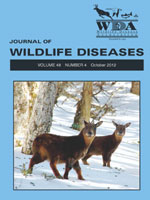EPIDEMIOLOGY (7)
PARASITOLOGY (3)
PATHOLOGY (2)
VIROLOGY (5)
SHORT COMMUNICATIONS (14)
LETTERS (4)
ERRATUM (1)

No abstract available
No abstract available
